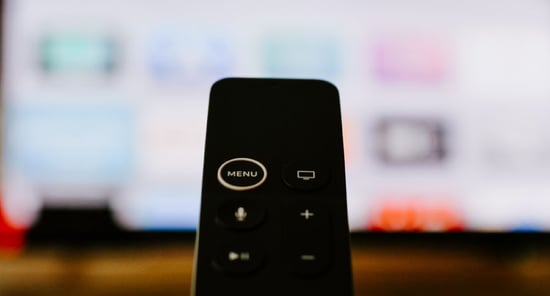
Can you imagine a world without movie theaters? It may become a reality beyond 2022, according to some industry analysts. Not only did the pandemic cause an 80% decline in box office ticket sales, but several major studios have implemented hybrid movie release models.
What this means is that the studios are releasing major film titles to streaming platforms and theaters simultaneously. In some cases, new film releases are going direct-to-streaming, reminiscent of direct-to-video releases.
Signs the Movie Industry May be Dying
Hybrid and direct-to-streaming release models have increased due to COVID-related challenges and restrictions for theaters. If audiences can’t watch or don’t feel comfortable at a theater, the movie industry can still reach them at home.
It’s the uptick in hybrid and direct-to-streaming movie releases that many industry analysts say is the writing on the wall for theaters. Yet, changes in how the American population watches the latest movies have been developing for more than a decade.
Pay-per-view options through cable subscriptions were first introduced in the early 1980s. In a way, pay-per-view shows and movies were a preview to today’s streaming services. They offered an on-demand viewing experience and the convenience of paying to watch something at home.
The convenience, variety of content, and personalized experience people get with streaming platforms have also impacted cable and live TV. This rings true for most Viaero Wireless subscribers who elected to participate in a survey. Of those participants, 48.46% said they subscribe to a streaming service, compared to 18.5% who maintain a cable subscription.

COVID-19 restrictions and public health orders accelerated the growth of streaming services in 2020. Netflix alone increased its subscriber base by 15.8 million between January and March. Walt Disney-owned Hulu added 1.9 million subscribers during the same period, according to Statista.
Amazon Prime subscriptions, which include Prime Video content, went up by 6 million during 2020’s first quarter. Although streaming services are not growing as rapidly as they did during 2020’s series of lockdowns, growth is still happening.
This sustained growth could mean more people are seeing less perceived value in cable and satellite. It also translates into a different way content, including movies, can reach American audiences.
The value of paying less for a monthly streaming subscription for access to new movie releases may outweigh the costs of a theater ticket. Even with one-time premiums to view new releases, some people can perceive more value in this than the expenses associated with live theater experiences.
But What If Theaters Aren’t Dying?
At the same time, some analysts and commentators say the movie theater industry is not dying. Some major studios, including Disney and Warner, have announced plans to send new releases straight to theaters in 2022.
Others point out that ticket sales have been steadily increasing in 2021 and are predicted to reach near $42 billion in 2024. This prediction slightly exceeds sales volume before the pandemic hit. Of course, this projected recovery will depend on whether COVID cases surge again.
The potential of future lockdowns and restrictions and people’s comfort levels will impact ticket sales. Plus, the overall health and vigor of national and local economies will influence discretionary spending.
Another valid point a few analysts make is that streaming services and movie theaters have co-existed for some time. While box office ticket sales peaked in 2002, nearly 12 years later, theaters are still operating.
These analysts also state that movie theaters have withstood other forms of competition, such as VHS and DVD rentals. They believe consolidation of physical theaters may be necessary for underperforming markets. However, it’s unlikely theaters will completely disappear. In particular, boutique and independent theaters stand a better chance of survival than big-name chains.

Will Streaming Services Really Take Over?
So, why are there two divisive camps on the future of movie theaters? Some may see new technologies and content delivery formats as formidable threats based on prior market trends. After all, Apple transformed the music industry with the inventions of the iPod and iTunes.
People on the other side could be retaining optimism about the iconic nature of the industry. Many film enthusiasts will agree that the home viewing experience doesn’t always compare to the big screen. Those with the space and means to create in-home theaters can replicate some of those aspects but not all.
There’s still the excitement that surrounds premiere night and opening weekend, the smell of the concession stand, and the sheer novelty of the big screen environment. In some ways, there are also fewer opportunities to become distracted. Noises from neighbors, street traffic, and home appliances can take us out of the story. And, seeing things that need attention at home can lead to additional distractions.
Yet, Netflix, Hulu, and Amazon Prime plan to increase spending and investments three-fold by 2022. Undoubtedly, some of that will go toward the production of exclusive content. Another portion will be set aside for acquiring the distribution rights to buzzworthy new movies.
The recent rise in studio-branded streaming services, such as Disney+, will continue to impact the “big three’s” ability to gain distribution rights to titles. This goes back to whether demand for the movie theater experience will sustain itself in the future. Or will studios discover it’s more profitable to launch streaming platforms and only release titles this way?
Steady increases in the number of streaming service subscriptions indicate there’s an opportunity. However, people subscribe to one or more services for reasons other than movies. They may be curious about what these services have to offer or be following the recommendations of peers.
Some might want to see if they can save money over cable or satellite. Others could be signing up for other benefits associated with their subscriptions, such as free two-day shipping. Adoption rates also don’t indicate how many customers will end up canceling their subscriptions or whether the streaming services market will eventually become too saturated.
Wrapping It Up
But, for now, studios seem to be making business decisions based on a combination of projected ROI and experimentation with consumer trends. Given the current signals, versions of the hybrid release model will likely continue for some time. And, just because a technology or distribution method declines doesn’t mean it can’t serve a niche market or adapt to a new use.
Looking for an affordable way to stream? Check out the Viaero Bundle with unlimited internet, cellular data, and a FREE TV!
Share your thoughts about streaming services and the movie industry below.
